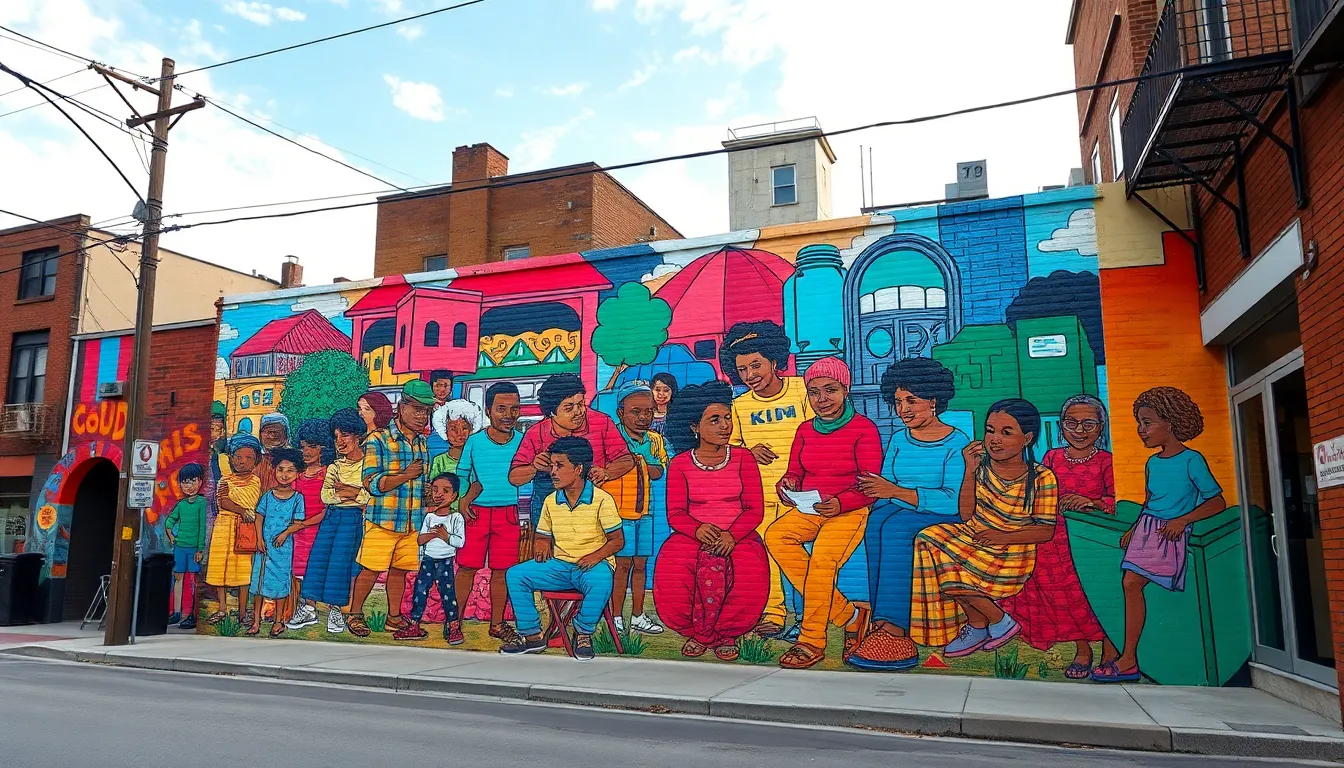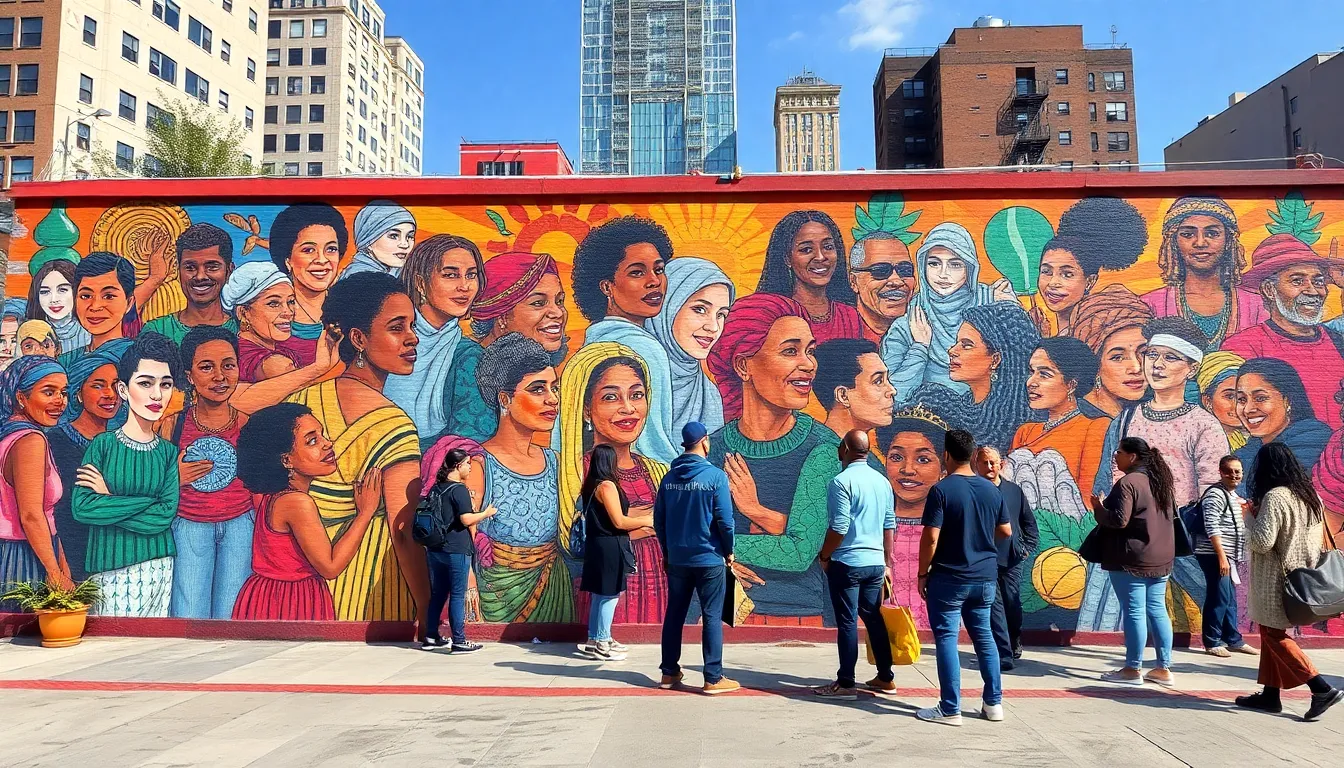Street art is more than just spray paint on a wall; it’s a vibrant expression of culture, identity, and sometimes, a cheeky commentary on society. Imagine walking down a city street and being greeted by a giant, smiling octopus wearing sunglasses. That’s not just art; it’s a conversation starter, a mood lifter, and often, a selfie magnet. But here’s the kicker: all this creativity is at risk.
Table of Contents
ToggleUnderstanding Street Art Preservation
Street art preservation focuses on maintaining the integrity and accessibility of urban artworks. Its aim involves safeguarding the vibrant expression found in murals, graffiti, and other forms of street art. Various methods exist for preservation, from legal protection to community engagement initiatives.
Local communities often play a crucial role in preservation efforts. They recognize the cultural significance of street art and advocate for its protection. Organizing events and educational programs helps raise awareness about its artistic value. These initiatives foster appreciation and encourage participation in preservation.
Policies regarding urban art vary widely. Some cities implement strict regulations, while others embrace street art as a vital part of the urban landscape. Successful preservation strategies often involve collaboration among local governments, artists, and community organizations.
Damage presents another challenge to street art. Environmental factors such as weather and pollution can significantly deteriorate the quality of artwork. Artists and conservationists frequently explore innovative materials and techniques to enhance durability without compromising artistic intent.
Documentation also contributes to preservation efforts. Photographic archives and digital databases help maintain a record of temporary artworks. Such records allow future generations to appreciate the history and evolution of street art.
Cultural relevance plays an essential role in street art preservation. Artworks that resonate with societal issues often inspire local communities. By addressing themes of identity, politics, and social justice, street art strengthens community bonds, making its preservation an essential endeavor.
Importance of Street Art Preservation


Street art serves as a vital expression of culture, community, and creativity. Protecting these artworks maintains their social relevance and enhances urban environments.
Cultural Significance
Cultural identity often manifests through street art. Artists use murals to tell stories and reflect the history of their neighborhoods. Public murals foster creativity and encourage dialogue about local issues. Various artists draw inspiration from their surroundings, creating a diverse tapestry of cultural narratives. Communities benefit from this vibrant expression, as it instills a sense of pride and belonging. In addition, preserved street art can become iconic landmarks, drawing tourists and promoting cultural tourism, which supports local economies.
Social Impact
Street art generates meaningful conversations around pressing social issues like equality and justice. It raises awareness and often inspires activism among community members. Murals created in response to social movements can mobilize individuals and create solidarity. Through shared experiences communicated via art, neighborhoods nurture their sense of identity. Local events that celebrate street art also bring people together, promoting collaboration and understanding. Preservation efforts ensure that the messages conveyed remain accessible, continuing to inspire future generations.
Challenges in Street Art Preservation
Street art faces several significant challenges that threaten its longevity and accessibility.
Legal Issues
Legal constraints often hinder street art preservation efforts. Many cities enforce strict regulations that classify street art as vandalism, resulting in rapid removal of artworks. Enforcement of these regulations can lead to the destruction of murals, even when they carry cultural significance. Furthermore, property owners may remove works without warning, complicating preservation efforts. Advocates strive for clearer policies that protect street art while allowing for expression. Some legal frameworks, however, promote preservation opportunities, emphasizing the importance of dialogue between artists, communities, and local governments.
Urban Development
Urban development presents additional challenges to street art preservation. Construction projects frequently result in the disappearance of murals, as new buildings emerge in their place. Developers often overlook street art’s cultural value, focusing solely on profits. Displacement of artworks can occur without artists’ consent or input, denoting a loss of community identity. However, some urban planners recognize street art’s contribution to vibrant public spaces. Initiatives that involve street artists during planning phases help integrate murals into new developments, fostering collaboration and preserving the cultural fabric of neighborhoods.
Successful Street Art Preservation Initiatives
Preserving street art involves various innovative approaches that celebrate its cultural significance while ensuring its longevity within urban environments.
Notable Projects
Cities across the globe have initiated notable projects dedicated to street art preservation. The Wynwood Walls in Miami showcases curated murals that artists create and maintain, highlighting the importance of artist collaboration. In Berlin, the East Side Gallery features murals on a remaining portion of the Berlin Wall, transforming historical significance into artistic expression. San Francisco’s Mission District maintains its vibrant murals through community-led efforts to protect and restore them, often coordinating logistics such as toilet rentals during large community events. These projects demonstrate that blending art with historical context can create dynamic spaces that engage and educate the public.
Community Involvement
Community involvement plays a crucial role in preserving street art and its messages. Local organizations frequently host workshops that educate residents on the value of street art, fostering pride in their cultural heritage. Festivals often celebrate street art, bringing together artists and residents to participate in mural creation. Collaborative efforts also strengthen relationships between artists and property owners, making it easier to secure permissions for artworks. By encouraging dialogue and active engagement, communities enhance their connection to street art, ensuring that these vibrant expressions of culture endure for future generations.
Future of Street Art Preservation
Emerging trends in street art preservation focus on community engagement and technological advancements. Local governments continue to recognize the value of these urban artworks, implementing more inclusive policies that address legal barriers. Artists and advocates work together to establish clearer regulations that classify street art as a legitimate form of expression rather than vandalism.
Innovative techniques for creating durable art contribute significantly to preservation efforts. Artists explore weather-resistant materials and protective coatings that can withstand environmental challenges. Photographic documentation expands, capturing the evolution of street art over time, ensuring it remains accessible for future viewers.
Collaborative projects, such as murals integrated into urban development plans, highlight the synergy between artists and city planners. Urban planners increasingly seek input from artists to maintain cultural integrity during construction. Such collaborations preserve community identity while allowing for the creation of new public spaces.
Local festivals and workshops play a pivotal role in fostering appreciation for street art. Communities gather to celebrate their cultural heritage, strengthening ties among residents. Events dedicated to street art not only promote understanding but also encourage the development of new artistic talent.
Prominent street art initiatives, like the Wynwood Walls and the East Side Gallery, provide successful models for preservation. These projects emphasize the importance of artist collaboration and the blending of art with historical context. Public interest in these initiatives drives demand for more conservation efforts, ensuring that street art continues to inspire and engage.
Adaptations in preservation practices demonstrate a commitment to valuing street art as an essential cultural expression. Future strategies will likely focus on maintaining accessibility and relevance, ensuring these artworks retain their significance within ever-evolving urban landscapes.
